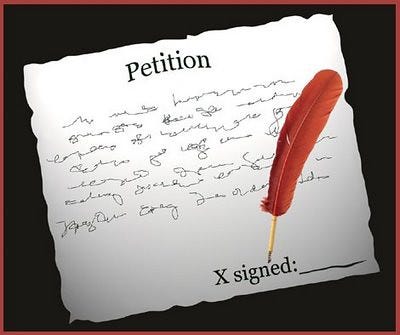#89: CIVICS 101: The Legislative Branch
Q&A #89: Does the congressional committee to which a bill is referred effectively control its disposition?
Our American Government
Our American Government is a small book published by the House of Representatives for citizens and those who seek a greater understanding of the American interpretation of democracy. It follows a question-and-answer format and covers a broad range of topics dealing with the three branches of our Government, the electoral process, and the role of political parties.
The Savvy Citizen is reproducing the 169 questions-and-answers through a series of posts called Civics 101. Each post will contain the Q&A as well as some additional commentary to add historical context, fun facts, or anything we believe will add to our collective understanding of these topics.
Think of it as your adult Civics class but without the test!
Let’s keep at it.
SECTION: The Legislative Branch: The Congress
The Committee System
Q&A #89: Does the congressional committee to which a bill is referred effectively control its disposition?
Committees, for the most part, control whether hearings will be held on bills referred to them and whether these bills will be reported to the full Chamber for debate. Ordinarily, if a bill is not reported by a committee, the bill dies because the Chambers usually defer to the expertise and power of committee members in determining a measure’s fate. However, both the House and Senate have procedures for allowing measures not reported by a committee to be considered by the full Chamber.
The House has a discharge procedure, usually used with measures of a controversial character. It is rarely employed and rarely successful, because it is cumbersome and because Members are uncomfortable circumventing committee authority. The procedure allows a majority of Representatives (218) to sign a petition to discharge a committee of any bill held there longer than 30 days, at which point the bill is placed on a special calendar and may be called up by any of the signers on the second or fourth Monday of any month. Very limited debate is allowed on the question of whether to consider a bill on the calendar. But, if the House agrees by majority to a bill’s consideration, then it is debated under its general rules.
It is also possible to discharge a Senate committee by motion, but the procedure is rarely used. Instead, because the Senate does not generally require amendments to measures to be on the same subject as the measures, a Senator may offer the text of a measure buried in committee as an amendment to any measure being debated by the full Senate. This practice is not allowed in the House, where amendments must be relevant (called ‘‘germane’’) to the measures they seek to amend.
My Thoughts
Interestingly, there are three forms of the Discharge Petition made. The Congressional Research Service (my favorite as you know) produced a summary of the rule in a 2003 Congressional Report which provides a full contextual history of the rule. Here’s a snippet (citations omitted, emphasis added):
One of the most significant innovations of the 1931 rule was the establishment of three alternate forms for initiating discharge action. Since 1931, it has been possible to file a discharge petition either:
directly on an unreported measure;
on a special rule providing that an unreported measure be extracted from committee and considered;
on a special rule for considering a measure already reported from committee, but never called up for floor consideration, or still on the calendar.
The first two methods of discharge both provide means for securing consideration of a measure on which the committee of referral seems unlikely to act. The second method has two advantages.
First, it permits proponents to draft a special rule that sets terms they consider appropriate for considering and amending the measure.
Second, if a discharge petition is filed directly on a measure in committee, the committee can render the petition moot by reporting the measure.
If the petition is filed on a special rule for considering the measure, however, then even if the committee reports the measure, it remains in order to discharge the Committee on Rules from the special rule.
The rule was drafted with the idea that the second method would become its normal use. [H]owever, in most Congresses since 1931, most Members attempting to use the discharge procedure to bring an unreported measure to the floor appear to have been either unaware of this method of discharge, or unattracted by its potential advantages.
You can read the full Congressional Report here.
Back next time with Q&A #90: Are committee hearings open to the public?
Meanwhile, don’t forget that we’re organizing the post links on a single page available here.
xo,
Kelley for the Savvy Citizen Team
May 5, 2025




